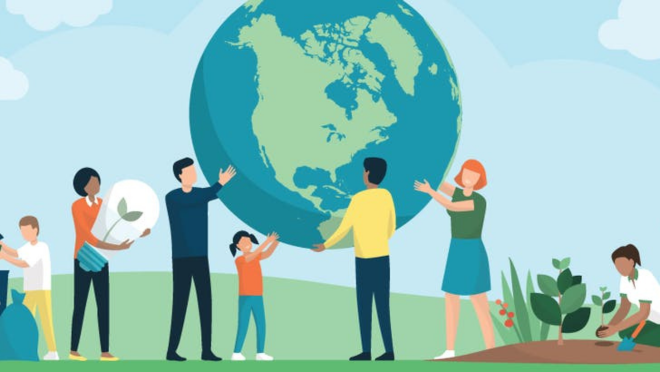The climate literacy crisis in Bangladesh: A silent threat to our survival
The climate literacy crisis in Bangladesh: A silent threat to our survival

Bangladesh, Asia’s largest delta and one of the most climate-vulnerable nations on earth, stands frighteningly unprepared to face the climate crisis. We live with rising sea levels, floods, and cyclones almost every year, yet the young generation is growing up without the proper education to understand what’s happening around them. The absence of structured climate education in schools is not just an educational gap anymore; it has become a critical threat to our survival.
Integrating climate literacy into the national curriculum is no longer just a matter of educational reform. It is now one of the most essential survival strategies for Bangladesh’s future.
Bangladesh’s climate education policies seem progressive on paper. The National Education Policy (NEP) (2010) mandates climate change to be included in curricula, and the National Curriculum and Textbook Board (NCTB) did integrate climate change into textbooks in 2013. But the reality is far more disappointing. According to a UNICEF study, although 77% of students reported they were taught about climate change in school, nearly half could not explain the basic concepts of climate change or global warming.
This difference between exposure and understanding signals a serious systemic failure. When young people cannot link the disasters they are facing to their cause, it becomes clear that the education system is failing to provide them with the essential knowledge.
But why is this happening, even though climate change is technically in the curriculum?
One significant factor is that climate education still feels distant and abstract to most students. Textbooks often emphasise disaster survival strategies, while we need more topics to point out the underlying causes of these events and how to prevent them. The result? Climate change feels like a problem for scientists and policymakers to deal with, rather than a societal challenge every citizen must understand and act on.
Even worse, many educators themselves lack the knowledge, training, and modern resources to teach this topic effectively. The World Bank found that 47% of secondary school teachers believe climate change coverage in the media is overstated. When the very people responsible for educating the next generation are themselves misinformed and skeptical, how can we expect students to grasp the gravity of the topic? This doesn’t just indicate a huge gap in teacher training; it’s a warning sign. If we don’t urgently invest in training our teachers properly, climate change will remain misunderstood, a checkbox topic in classrooms instead of the life-threatening issue it truly is.
Moreover, current climate education, where it exists, leans heavily on the rote memorisation of dry facts like naming greenhouse gases, listing disaster patterns, and memorising data. But this exam-driven, theory-heavy approach doesn’t help students think critically or develop solutions. Instead of creating resilience among students, this approach ends up creating climate anxiety. What we need now is more hands-on, project-based, and exploratory learning that brings the issue closer to students, makes it feel real, and encourages students to do something about it.
Next come the structural barriers. There are no standardised learning goals or assessments for climate literacy in our curriculum. Access to learning materials in Bengali is very limited, which makes it difficult for students, especially in rural areas, to fully engage themselves with the topic. Digital learning tools, which could bridge these gaps, remain highly inaccessible to most students and schools.
These gaps have dire consequences. Myths and misinformation fill the gaps that education could not. In many rural communities, climate disasters are still considered divine punishment from God, rather than scientifically predictable outcomes of human activity. Now, can we really blame them when we’ve failed to teach them the truth?
This issue is not exclusive to Bangladesh. Data shows that investing in education in low-income and lower-middle-income countries could reduce global carbon emissions by an estimated 51.48 gigatons by 2050. Yet education receives less than 1.5% of total global climate finance. For Bangladesh, a country that is already suffering from the consequences of climate change, this neglect is not only unfair but could also prove life-threatening for its citizens.
We are raising a generation that will face the full force of the climate crisis. Yet, we are not preparing them with the knowledge, skills, and tools they need to survive it, let alone fight back.
In a country like ours, where climate change is already showing its wrath, we cannot afford to keep climate literacy a forgotten point in policy documents or a forgotten chapter in outdated textbooks. For the sake of our future generation, we must provide them with enough tools and education to understand the crisis they didn’t create but will be forced to live through.


